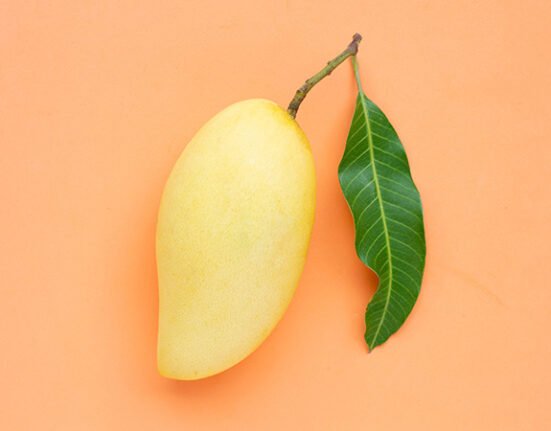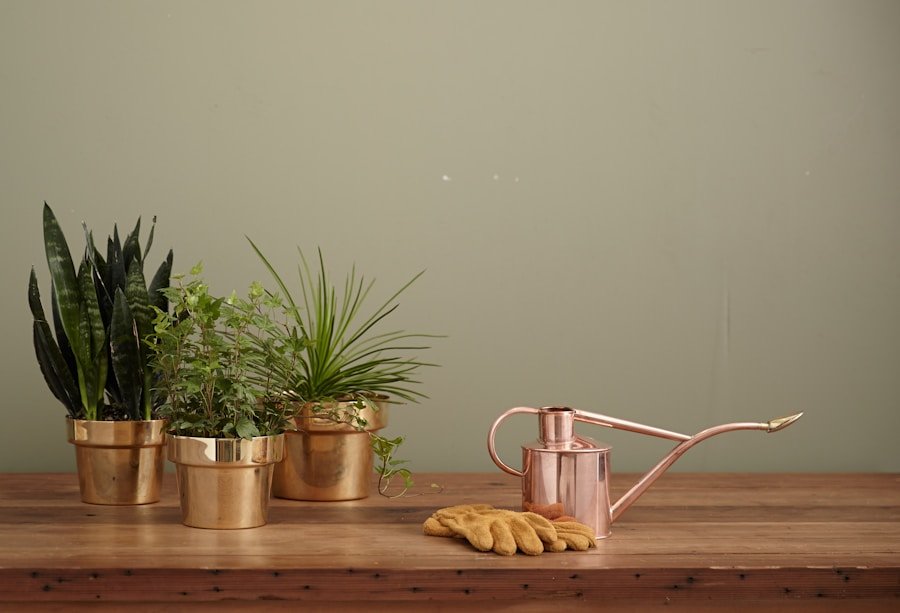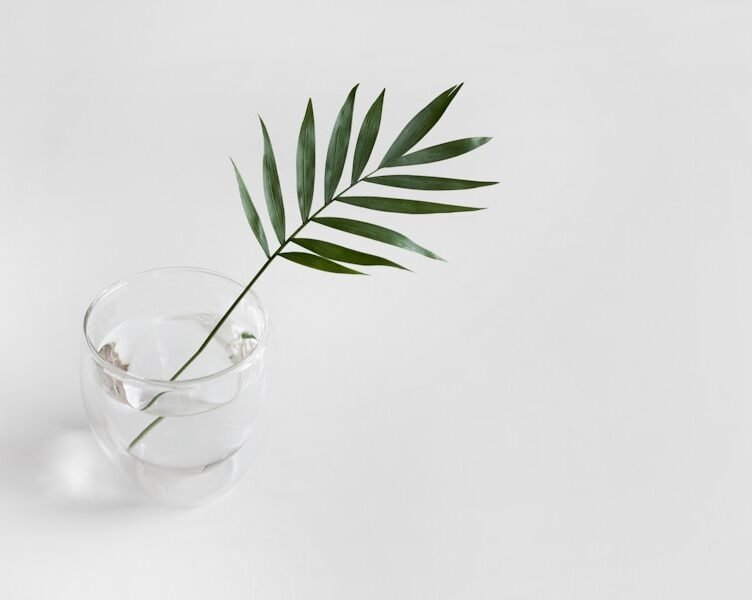When cultivating vegetables indoors, several species excel in indoor environments. Prominent indoor vegetable plants include tomatoes, peppers, lettuce, spinach, and herbs like basil, parsley, and cilantro. These plants are well-suited for indoor growth due to their compact size and ability to thrive in containers.
Furthermore, they are easily maintained and harvested, making them ideal for indoor gardening. Microgreens are another popular choice for indoor vegetable cultivation. These young, nutrient-dense greens are harvested shortly after the emergence of the first true leaves.
They are simple to grow indoors and have gained popularity among indoor gardeners. Common microgreen varieties include arugula, kale, radish, and broccoli. Not only are they easy to cultivate, but they also add a burst of color and flavor to dishes, making them a favored option among indoor gardening enthusiasts.
Key Takeaways
- Some popular indoor vegetable plants include herbs like basil and mint, leafy greens like lettuce and spinach, and compact vegetables like cherry tomatoes and peppers.
- Growing indoor vegetable plants can provide a fresh and convenient source of produce, reduce grocery costs, and improve indoor air quality.
- Easy-to-grow indoor vegetable plants for beginners include herbs like chives and parsley, microgreens, and compact varieties of tomatoes and peppers.
- Best indoor vegetable plants for small spaces include compact varieties of vegetables, herbs, and microgreens that can thrive in containers or small pots.
- Top indoor vegetable plants for low light conditions include leafy greens like kale and arugula, herbs like cilantro and chives, and compact varieties of tomatoes and peppers.
Benefits of growing indoor vegetable plants
Fresh Produce Year-Round
One of the main advantages is the ability to have fresh, homegrown produce year-round. By growing vegetables indoors, you can have access to fresh, organic produce regardless of the season. This can not only save you money on groceries, but it can also ensure that you have a steady supply of healthy, nutritious vegetables at your fingertips.
A Therapeutic and Rewarding Experience
In addition to providing a constant supply of fresh produce, growing indoor vegetable plants can also be a therapeutic and rewarding experience. Tending to plants and watching them grow can be a calming and fulfilling activity. It can also provide a sense of accomplishment and pride when you are able to harvest and enjoy the fruits of your labor.
Teaching Children about Sustainable Living
Furthermore, indoor gardening can also be a great way to teach children about where food comes from and the importance of sustainable living.
Easy-to-grow indoor vegetable plants for beginners
For beginners looking to start an indoor vegetable garden, there are several easy-to-grow options to consider. One of the easiest vegetables to grow indoors is lettuce. Lettuce is a fast-growing plant that thrives in containers and doesn’t require a lot of maintenance.
It can be grown from seeds or starter plants and can be harvested as needed for fresh salads and sandwiches. Another easy-to-grow indoor vegetable plant for beginners is herbs such as basil, parsley, and cilantro. These herbs are low-maintenance and can be grown in small pots on a sunny windowsill.
They not only add flavor to dishes but also add a touch of greenery to indoor spaces. Additionally, cherry tomatoes are another great option for beginners. They can be grown in hanging baskets or containers and require minimal care while producing a bountiful harvest.
Best indoor vegetable plants for small spaces
| Vegetable Plant | Light Requirement | Watering Needs | Growth Time |
|---|---|---|---|
| Tomatoes | 6-8 hours of sunlight | Regular watering, soil should be kept moist | 60-85 days |
| Peppers | 6-8 hours of sunlight | Regular watering, soil should be kept moist | 60-90 days |
| Lettuce | 4-6 hours of sunlight | Regular watering, soil should be kept moist | 30-60 days |
| Spinach | 4-6 hours of sunlight | Regular watering, soil should be kept moist | 40-50 days |
For those with limited space, there are several indoor vegetable plants that are well-suited for small spaces. One of the best options for small spaces is dwarf or compact varieties of vegetables such as tomatoes, peppers, and cucumbers. These varieties are specifically bred to thrive in small containers and produce a high yield of fruits in a confined space.
Another great option for small spaces is vertical gardening. Vertical gardening allows you to grow vegetables such as beans, peas, and cucumbers upwards on trellises or vertical planters, maximizing space and allowing for a greater variety of plants in a small area. Additionally, compact herbs such as thyme, oregano, and chives are perfect for small spaces and can be grown in small pots on a windowsill or countertop.
Top indoor vegetable plants for low light conditions
For those with low light conditions in their homes, there are still several indoor vegetable plants that can thrive in these environments. One of the best options for low light conditions is leafy greens such as spinach and kale. These vegetables can tolerate lower light levels and can be grown in containers on a windowsill or under artificial grow lights.
Another great option for low light conditions is mushrooms. Mushrooms don’t require light to grow and can be easily cultivated indoors using mushroom growing kits or by inoculating substrate with mushroom spores. Additionally, root vegetables such as carrots and beets can also tolerate lower light levels and can be grown in containers with well-draining soil.
How to care for indoor vegetable plants
Lighting Requirements
Most indoor vegetable plants require at least 6-8 hours of sunlight per day, so it’s important to place them in a sunny window or supplement with artificial grow lights if necessary.
Watering and Soil Care
Additionally, it’s important to water indoor vegetable plants regularly, ensuring that the soil is consistently moist but not waterlogged.
Nutrition and Pest Management
In terms of nutrients, it’s important to fertilize indoor vegetable plants regularly with a balanced fertilizer to ensure healthy growth and bountiful harvests. It’s also important to monitor for pests and diseases and take appropriate measures to prevent and treat any issues that may arise. By providing the proper care and attention, indoor vegetable plants can thrive and provide a steady supply of fresh produce.
Creative ways to incorporate indoor vegetable plants into home decor
Incorporating indoor vegetable plants into home decor can add a touch of greenery and freshness to indoor spaces. One creative way to incorporate indoor vegetable plants into home decor is by using hanging planters or vertical planters to create a living wall of herbs or leafy greens in the kitchen or dining area. This not only adds visual interest but also provides easy access to fresh herbs for cooking.
Another creative way to incorporate indoor vegetable plants into home decor is by using decorative containers or planters to showcase the plants as part of the overall decor scheme. For example, using colorful ceramic pots or vintage containers can add a pop of color and personality to indoor spaces while also providing a home for the vegetable plants. Additionally, using tiered plant stands or shelving units can create a visually appealing display of indoor vegetable plants while maximizing space.
Tips for growing a successful indoor vegetable garden
To ensure a successful indoor vegetable garden, there are several tips to keep in mind. First and foremost, it’s important to choose the right vegetables for your specific growing conditions, whether it’s limited space, low light, or specific taste preferences. Additionally, it’s important to provide the proper care and attention to your indoor vegetable plants, including regular watering, fertilizing, and monitoring for pests and diseases.
It’s also important to consider the container size and type when growing indoor vegetable plants. Choosing containers with good drainage and the appropriate size for the specific plant’s needs is crucial for healthy growth. Furthermore, it’s important to rotate the plants periodically to ensure even growth and prevent leggy or lopsided growth due to uneven light exposure.
In conclusion, growing indoor vegetable plants can be a rewarding and fulfilling experience that provides numerous benefits such as access to fresh produce year-round, therapeutic enjoyment, and educational opportunities. By choosing the right vegetables for your specific growing conditions, providing proper care and attention, and incorporating creative ways to showcase the plants in home decor, you can create a successful indoor vegetable garden that adds beauty and functionality to your living space. Whether you’re a beginner or experienced gardener, there are plenty of options for growing indoor vegetable plants that can fit your needs and preferences.
With the right knowledge and dedication, you can enjoy the satisfaction of growing your own fresh produce right in your own home.
FAQs
What are some popular indoor vegetable plants?
Some popular indoor vegetable plants include cherry tomatoes, peppers, lettuce, spinach, and herbs like basil, parsley, and cilantro.
What are the benefits of growing indoor vegetable plants?
Growing indoor vegetable plants allows you to have fresh produce year-round, even in small living spaces. It also provides a source of organic, homegrown vegetables and herbs.
What are the best conditions for growing indoor vegetable plants?
Indoor vegetable plants thrive in well-lit areas with plenty of natural sunlight. They also require well-draining soil, adequate water, and proper air circulation.
How can I care for indoor vegetable plants?
Caring for indoor vegetable plants involves regular watering, monitoring for pests and diseases, and providing appropriate fertilization. It’s also important to prune and harvest the plants as needed.
Can I grow indoor vegetable plants without a garden or outdoor space?
Yes, indoor vegetable plants can be grown in containers, pots, or even hydroponic systems, making them suitable for apartments, condos, and other small living spaces without outdoor gardens.







2 Comments